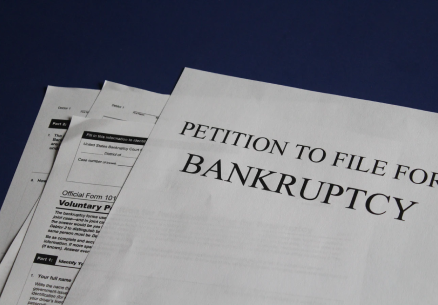
Getting back on your feet financially after a bankruptcy is a long-term project. Having a plan for recovery and growth is key.
A bankruptcy stays on your credit report for years after the process is completed. That kind of “ding” announces to potential lenders that you made mistakes, that lending to you is risky, and that your business plan may not be viable in the long run.
Chapter 7 bankruptcy is particularly harsh, because it requires liquidation of assets. Afterward, you’re starting from scratch, with few options for collateral to secure loans and get started again. The bankruptcy designation on your credit report remains for 10 years.
Chapter 11 bankruptcy can restore a business to solvency but it’s a long road. This method requires significant work but can be beneficial because you can end up working with your creditors as partners, making them allies who may loan to you or otherwise help when you recover. Your credit report will show your bankruptcy for 10 years.
Chapter 13 bankruptcy usually applies to individuals, and allows for structured repayment of debts over time, usually three to five years. The bankruptcy designation on your credit report from Chapter 13 falls off after seven years.
How to Recover from Bankruptcy and Get Back to Business
Banks often have hard and fast rules about lending that say only businesses with a specific credit score can qualify. If you’re intent on returning to a viable business operation, try these steps to restore your credit:
- Make timely payments on everything.
- Review financial processes and decisions, looking for ways to be more efficient or reduce spending.
- Use a third-party vendor to “self report” loan and debt payments to credit bureaus, potentially improving your credit score faster.
- Establish a steady (and growing) source of income.
- Document your business’s financial recovery so you can explain your strategy to a lender.
- Write a new business plan that explains how you’ve learned from past experience.
Once enough time has passed, the stigma of bankruptcy fades. It can still be tough to secure a loan but with documentation, a good track record of payments, a new business plan, and reliable income, you can present your case to a local loan officer, preferably one who knows you.
Ways to make a business loan official say “yes” to your application:

- Get a co-signer. A new business partner with assets and a clean financial record will make a loan officer reconsider your application.
- Build slowly. By getting a small loan and making the necessary payments (and showing a loan officer what you did with the funds), you’re taking steps to the more significant loan your business needs.
- Collateral counts. If you can offer property, a vehicle, or other equipment as collateral against a loan, you will have an edge
Finding a Business Loan After Bankruptcy
Persistence is key to recovering from bankruptcy and getting new loans. Going to your every day banker for a loan may allow you to make a case for a loan if the person is familiar with you. Make a strong case that your business is good for the region, which will make the bank look good in the eyes of local residents.
Alternative sources of funding include:
- Wisconsin Economic Development Corporation (WEDC) offers grants and loans to small businesses that have local roots.
- Peer-to-peer lending, of which there are many companies online. Check interest rates and terms before signing.
- Invoice financing is a risky form of borrowing that involves using your unpaid balances as collateral for a roll-up loan.
- Crowdfunding, often through social media, can be very effective if you write a convincing pitch and can convince your followers to share it for maximum reach. This form of fundraising does not require repayment.
- Grants are usually competitive and require some expertise to apply for but they do not have to be repaid under most circumstances.
An experienced business attorney can help you make it through bankruptcy and back to solvency. Call Wisconsin’s experts, Kerkman & Dunn, for a consultation today.


